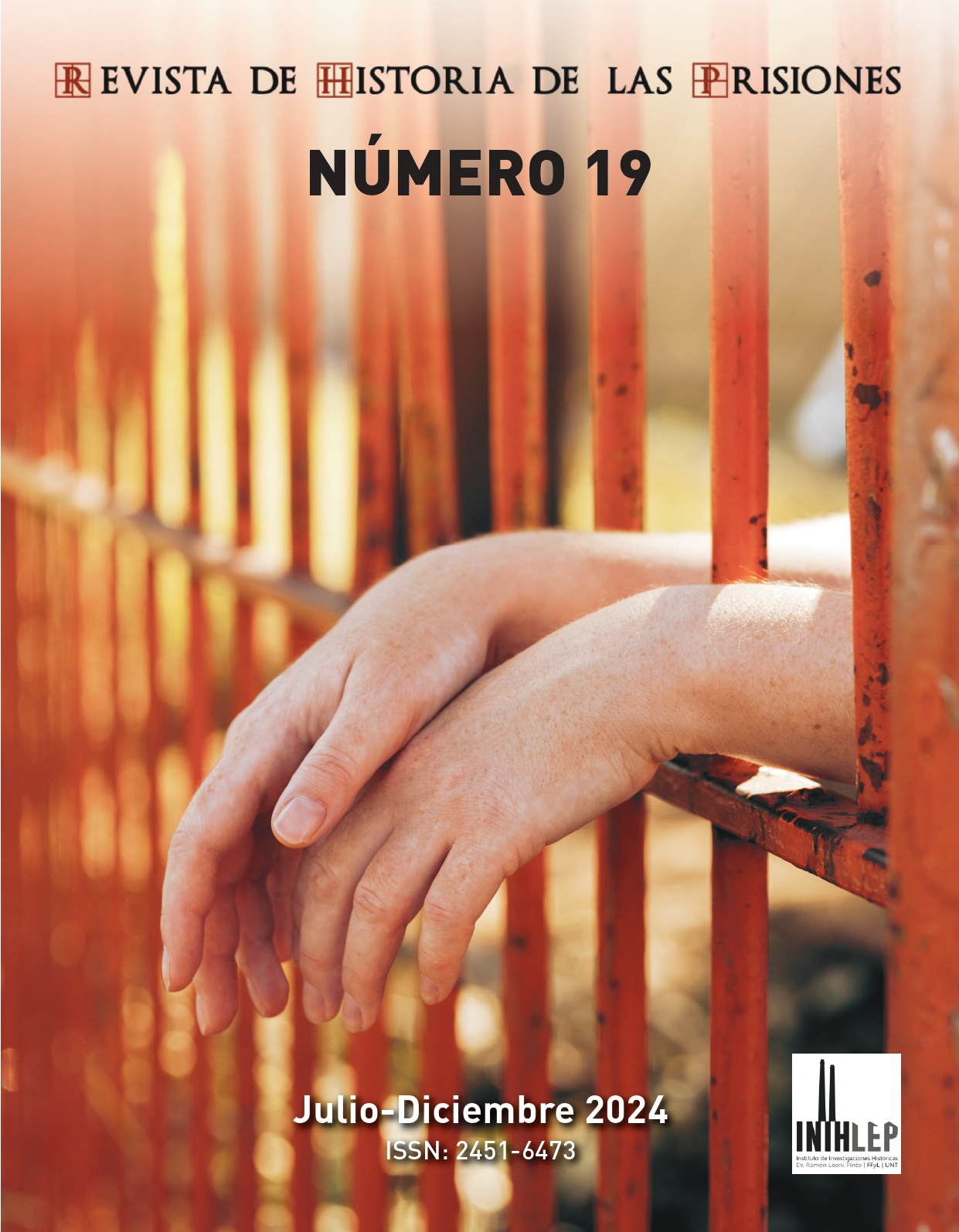The Impact of the Media on the Construction of Punitive Power from a Historical Perspective. The Case of “La Voz del Interior” (1904-1908)
Abstract
The Punitive Power carried out by the executive agencies of the State is often conditioned by the Media Power which, through its discourses, can mediate in the interpretation of reality, limit its knowledge and distort the events it reports. On the other hand, we find two degrees of criminalization, the primary one, which is the one carried out by the legislator when typifying a crime, and the secondary one, which is the one carried out by the executive agencies at the time of selecting the persons who carry out these typical conducts. Of course, this selection is not carried out at random, or at least it should not be, but is the result of the management of a set of state agencies that make up the criminal system. In this article we will try to highlight these issues using as a documentary source the newspaper La Voz del Interior in its first years of circulation in the streets of Córdoba (1904-1908). The main objective of this article is none other than to find out if there was any kind of implication between media criminalization and the application of punitive power by executive agencies.
References
Aversa, M. (2003) Vagos, mendigos y delincuentes: La construcción social de la infancia peligrosa. Buenos Aires, 1900-1910. Cuadernos del Sur, Historia. [online]. n.32, pp. 9-26. Disponible en: https://bibliotecadigital.uns.edu.ar/scielo.php?script=sci_arttext&pid=S166876042003001100001&lng=pt&tlng=es. Fecha de consulta: 20/09/24
Baratta, A. (2001) Criminología crítica y crítica del derecho penal, ed. Siglo XXI, México.
Becker, H., (1963). Outsiders; studies in the sociology of deviance. Free Press of Glencoe. London.
Brunetti, P. (2006). Relatos de prensa: La crónica policial en los diarios cordobeses de comienzos del siglo XX (1900-1914). Jorge Sarmiento Editor-Universitas libros Ed. Ffyh (Unc). Córdoba.
Bustos Ramírez, J. (1983). El control formal: policía y justicia: la instancia policial. En El pensamiento criminológico: estado y control. Coordinado por Bustos Ramírez, J y Bergalli, R. Península. Madrid. Pp. 63-72
Casagrande, A. (2012), Los vagabundos y la justicia de Buenos Aires durante el período tardo colonial (1785-1810). Construcciones jurídicas y criminalidad. Instituto de investigaciones de historia del derecho, Buenos Aires.
Cesano, J. y Muñoz, D., (2010), Inmigración, anarquismo y sistema penal. los discursos expertos u la prensa Córdoba y Buenos Aires 1890/1910 (protesta social, flujos migratorios y criminalización), Alción Editora. Córdoba.
Chartier, R. (1994) Libros, lecturas y lectores en la Edad Moderna. Alianza. Madrid.
De Lara, M. T., (1977). Metodología de la historia social de España. Siglo XXI de España Editores.
Elbert, C. (2004). Manual básico de criminología, editorial Eudeba, tercera edición. Buenos Aires.
Foucault, M. (2013) Vigilar y Castigar: Nacimiento de la prisión. 2da. Ed. Siglo Veintiuno Editores. Buenos Aires.
Garland, D. (2005) La Cultura del Control: Crimen y orden social en la sociedad contemporánea. Traducción Máximo Sozzo. Gedisa. Barcelona.
Girard, R. (1986). El chivo expiatorio. Traducción J. Jordá. Editorial Anagrama. Barcelona.
Ingenieros, J., (1908) Los niños vendedores de diarios y la delincuencia precoz (Notas sobre una encuesta efectuada en 1901), en Archivos de Psiquiatría, Criminología y Ciencias Afines (VII), Pp. 329-348. Buenos Aires, Talleres Gráficos de la Penitenciaría Nacional. Este artículo había sido publicado previamente en los Anales del Patronato de la Infancia, Año XIII, T XIII, nº 4-5, abril/mayo de 1905.
Lombroso, C. (2005). El atlas criminal de Lombroso. Editorial Maxtor
Rama, A., (1984), La ciudad letrada. Arca. Montevideo.
Roxin, C., (1997) Derecho Penal Parte General. T.I. Fundamentos. la estructura de la teoría del delito. 2da. Edición. Editorial Civita. Madrid
Soler, S. (1986) Derecho Penal Argentino. Tipográfica Editora Argentina. Buenos Aires
Steele, C. M. (2010). Silbando a Vivaldi: Cómo se forma una identidad y cómo la situación social influye en nuestro comportamiento. Fondo de Cultura Económica. México.
Surace, R. (2008). Los excluidos sociales: Los nuevos desaparecidos de la democracia. A propósito de la concepción y del alcance actual del estereotipo social del delincuente. Derecho y Cambio Social, 5(14), Pp. 1-22. Disponible en: https://dialnet.unirioja.es/servlet/articulo?codigo=5503261. Fecha de consulta: 05/09/24
Vázquez Montalbán, M., (1997) Historia y comunicación social. Grijalbo Mondaroni. Barcelona.
Young, J. (2009). El pánico moral. Sus orígenes en la resistencia, el ressentiment y la traducción de la fantasía en realidad. Revista Delito y sociedad, 11(31), 7-21. Disponible en: https://pdfs.semanticscholar.org/2bff/a292b085652da0d5bad60a6e959e8a4dbbbf.pdf Fecha de consulta: 19/08/24
Zaffaroni, R. (1998a). En busca de las penas perdidas. Deslegitimación y dogmática jurídico-penal, ed. Ediar, Buenos Aires.
Zaffaroni, R., (2009) Estructura básica del derecho penal, Ediar , Bs As
Zaffaroni, R.; Alagia, A. y Slokar, A., (2011) Derecho Penal: Parte General, Ediar, Buenos Aires.
Zaffaroni, E. R. (2013). La cuestión criminal. Planeta. Buenos Aires.
Zaffaroni, R.; Alagia, A.; Slokar, A., (1998b) Derecho Penal Parte General, segunda edición, Sociedad Anónima Editora, Buenos Aires.
Zapiola, M., (2008). “Niños en las calles: imágenes literarias y representaciones oficiales en la Argentina del Centenario”. En Gayol, S. y Madero, M. Formas de Historia cultural. Prometeo- UNGS. Buenos Aires. Pp. 305-332. Separata disponible en: https://www.aacademica.org/maria.carolina.zapiola/16.pdf. Fecha de consulta: 22/10/24.


